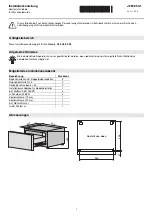
6-2
Chapter 6: RAID configuration
6.1
Setting up RAID
The motherboard comes with the Intel
®
ICH10R southbridge controller that
supports the following SATA RAID solutions:
•
LSI MegaRAID software RAID Configuration Utility
(default) with RAID 0,
RAID 1, and RAID 10 support (for both Linux and Windows OS).
•
Intel Matrix Storage Manager
with RAID 0, RAID 1, RAID 10, and RAID 5
support (for Windows OS only).
6.1.1
RAID definitions
RAID 0
(Data striping)
optimizes two identical hard disk drives to read and write
data in parallel, interleaved stacks. Two hard disks perform the same work as a
single drive but at a sustained data transfer rate, double that of a single disk alone,
thus improving data access and storage. Use of two new identical hard disk drives
is required for this setup.
RAID 1
(Data mirroring) copies and maintains an identical image of data from one
drive to a second drive. If one drive fails, the disk array management software
directs all applications to the surviving drive as it contains a complete copy of
the data in the other drive. This RAID configuration provides data protection and
increases fault tolerance to the entire system. Use two new drives or use an
existing drive and a new drive for this setup. The new drive must be of the same
size or larger than the existing drive.
RAID 10
is data striping and data mirroring combined without parity (redundancy
data) having to be calculated and written. With the RAID 10 configuration you get
all the benefits of both RAID 0 and RAID 1 configurations. Use four new hard disk
drives or use an existing drive and three new drives for this setup.
RAID 5
stripes both data and parity information across three or more hard
disk drives. Among the advantages of RAID 5 configuration include better
HDD performance, fault tolerance, and higher` storage capacity. The RAID
5 configuration is best suited for transaction processing, relational database
applications, enterprise resource planning, and other business systems. Use a
minimum of three identical hard disk drives for this setup.
6.1.2
Installing hard disk drives
The motherboard supports SATA hard disk drives for RAID set configuration. For
optimal performance, install identical drives of the same model and capacity when
creating a disk array.
See section
2.4 Hard disk drives
for SATA hard disk drive installation.
















































